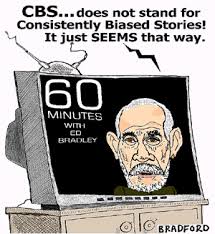Dancing has always been thought of as a medium, but for this blog entry, I wanted to highlight the movie Rize. The film, which chronicles the krumping dance movement in South Central Los Angeles, highlights key insights into the evolution of the style. Krumping, which is a fast paced, aggressive dance created in Los Angeles looks more like a ritualistic fighting ceremony than a dance routine. In the film, the director juxtaposes the expressive dance moves done by the characters with a tribal African dance. To most people who haven't been exposed to krumping and its style, it looks like nothing more than a series violent body movements. To put it quite simply, it is comparable to an entertaining seizure, in which the dancers' bodies convulse to express their anger and passion. This movie is a perfect example of how class experiences shape the way that we decode the message of the dance. The film concludes with an epic battle between two crews that prepared for months to get a shot at the crown. For people who think that krumping is an obnoxious and unimpressive dance style, this battle seems superfluous. But to the competitors in the final battle, it is their life. Their entire livelihood depends on the outcome of this single battle. This is a perfect example of polysemy, in which this event means so much to one group but nothing to another. In the end, the underdog team was victorious and the main team (called the Clowns) was extremely distraught. As an outsider, it looked as if they had lost a member of their family or as if a traumatic event had just occurred. However, the style that the created and had held so dearly, failed them.

Due to the success of the movie, krumping has become a mainstream part of hip hop culture. From its humble origins as a crazy street dance, it was able to evolve into a message that can appeal to the masses. Now, people appreciate the style that was once deemed too erratic and obnoxious. Here is a clip from the film:
 Halloween at Babson and all over the United States is a exciting time of year when we can live vicariously through our favorite pop culture icons, monsters, and villains. The costumes in themselves are an important medium, especially around one of our favorite holidays. It allows us to become someone or something else, and mask our true identities. Personally, I love costumes that play on inside jokes or obscure pop culture references, just because when your audience figures out who you are dressed as, it makes it so much funnier. I did some research and I found out that the tradition of wearing Halloween costumes arises from the Pagan holiday called Samhain, in which individuals dressed as evil spirits to get rid of them. Today, we have given it a much more secular meaning, and dressing up is something that we can all enjoy. My point is that costumes are a medium that influence the audience that we project them to. For example, a girl who is scantily clad at a costume party is obviously doing so for a reason. For others, taking a more conservative approach shows their personality as well. There is something for everyone, and personally, I love costumes that I can craft out clothes that I have and a few scarce resources. Being the broke college student that I am, this Halloween I decided to dress up as Token from South Park. All I needed was a purple t shirt, black pants, and a yellow letter T on my t shirt. It worked out well because the audience decoded the character, and appreciated the resourcefulness with which I made my costume. Not to mention that I bear some resemblance to him. Here is what token looks like haha:
Halloween at Babson and all over the United States is a exciting time of year when we can live vicariously through our favorite pop culture icons, monsters, and villains. The costumes in themselves are an important medium, especially around one of our favorite holidays. It allows us to become someone or something else, and mask our true identities. Personally, I love costumes that play on inside jokes or obscure pop culture references, just because when your audience figures out who you are dressed as, it makes it so much funnier. I did some research and I found out that the tradition of wearing Halloween costumes arises from the Pagan holiday called Samhain, in which individuals dressed as evil spirits to get rid of them. Today, we have given it a much more secular meaning, and dressing up is something that we can all enjoy. My point is that costumes are a medium that influence the audience that we project them to. For example, a girl who is scantily clad at a costume party is obviously doing so for a reason. For others, taking a more conservative approach shows their personality as well. There is something for everyone, and personally, I love costumes that I can craft out clothes that I have and a few scarce resources. Being the broke college student that I am, this Halloween I decided to dress up as Token from South Park. All I needed was a purple t shirt, black pants, and a yellow letter T on my t shirt. It worked out well because the audience decoded the character, and appreciated the resourcefulness with which I made my costume. Not to mention that I bear some resemblance to him. Here is what token looks like haha:








